Toronto’s Ford Hotel in the 1930s (postcard S-1500)
I vividly remember the old Ford Hotel, but unfortunately, until I began researching its history, never realized that it had once been one of the city’s finest hotels. Located on the northeast corner of Bay and Dundas Streets, my memories of it are from the days when it had become extremely tacky. One reason for its decline is the dubious reputation it received from being directly across from the bus station at Bay and Edward Streets. People who arrived in the city by bus, without a place to stay, often found budget-priced rooms at the Ford. I remember that in the 1960s, it was considered a “flop-house,” even its coffee shop a place that was best avoided.
In fairness, the Ford did not entirely deserve its unsavoury reputation. It was a victim of the economic downturn caused by the Great Depression, which descended shortly after the hotel opened. Another factor was the many tragic occurrences, beyond its control, that happened within it. Despite its reputation, there are some who remember the hotel fondly. There were immigrants that arrived in Toronto to begin a new life, which started at the Ford Hotel. As well, there were budget-minded tourists that stayed in it during the five decades that it registered guests. There are similar places in Toronto today that fulfill these needs, and there is a place for them. However, when the Ford opened, there were no reasons to believe that it would have anything other than a bright future.
Its story began during the final years of the 1920s, a decade that became famous for its exuberance—the “Roaring Twenties.” Toronto’s nightlife was booming, the city attracting over three million tourists a year, making it one of North America’s top tourist destinations. More hotel space was needed and Richard T. Ford responded to this need. Headquartered in Rochester N.Y., he owned a chain of luxury hotel and decided to build one in Toronto. At a cost of $2 million, he constructed an hotel with three 12-storey towers that were connected, in total containing 750 rooms. The one-storey base was where the lobby, guest facilities, coffee shop, and restaurant were located. Its architecture was a duplicate of the Ford Hotel built in Buffalo in 1923, designed by J. Foster Walker.
The Ford Hotel opened on the on May 21, 1928, billed as Toronto’s most luxurious hotel, though its room rates were at budget prices ($1.50-$2.50). The city’s mayor and many other dignitaries attended its inauguration, and it appeared as if it was destined for prosperous times. It was furnished by the T. Eaton Company, each room boasting a reading lamp, private bathroom, ice-water tap, and telephone. The hotel included valet and laundry services, a barber shop, newsstand and a cigar shop. The restaurant on the ground-floor level was operated by G. Brown, who had been employed for 35 years at the prestigious and historic Queen’s Hotel on Front Street. It had recently been demolished to build the Royal York Hotel. The Queen’s Hotel’s loss was the Ford’s gain. However, when the Royal York opened, it ended the Ford’s boast of being the latest luxury hotel in the city.
The hotel managed to survive the Depression years and was successful throughout the 1940s. In 1949, it was taken over by the Sheraton chain and renovated. In 1954 the Ford was purchased by a New York syndicate that considered it a profitable investment. It continued to be successful, offering nightly entertainment in its Tropical Room and good food in its restaurant, which was leased to Murray’s Restaurant chain. During the 1950s, the Casino Theatre on Queen Street near Bay, which featured burlesque and strip shows, also booked many well-known stars. The theatre’s performers were housed mainly at the Ford Hotel—Lillian Rush, Jimmy Boyd, Gordon McRae, Burl Ives, Dizzy Gillespie, and Jimmy Dorsey.
However, a series of tragedies occurred at the Ford that created bad publicity. It began when a young Montreal woman committed suicide by leaping from a window. Next, on October 26, 1955, a 22-year old immigrant was ordered to return to his room as he was wandering around the lobby area attired only in a bed sheet. In his locked room, he repeatedly fired a 22-gauge shotgun into the walls. The police arrived, broke down the door, and shot tear gas into the room. When the smoke cleared, the man was found dead from a self-inflicted wound.
In the 1960s, the hotel fell further into decline. The fact that the Gideon Bible Society had placed copies of the Good Book in the rooms, did not prevent the hotel’s residents from straying from the straight and narrow. The hotel became a popular gathering spot for various miscreants and those upon whom society frowned. It also attracted year-around guests who took advantage of its reasonable rates. In 1969, one of them, a 77-year-old man, died in a fire that had ignited in a wastepaper basket on the 7th floor.
On November 14, 1970 a 34-year-old engineer fell to his death when the elevator doors opened on an empty shaft. In 1973, a 10-year old boy was murdered in one of the rooms. The publicity from this horrendous homicide caused more and more patrons to avoid it. It closed on October 19, 1973 and was demolished during the winter of 1974.
Sources: www.blogto.com—torontoist.com
Approximate location of the Ford Hotel on the northeast corner of Bay and Dundas Streets.
The hotel shortly after it opened in 1928. The view is of the west facade on Bay Street. Toronto Archives, S272, SS0003, Item 0735.
Postcard of the Ford Hotel printed in 1929. The three towers and the single-storey base are evident in this view of the building’s east side. Image from Wikimedia Commons.
View looking west along Dundas Street from Yonge Street c. 1929. The United Cigar Store on the northwest corner remained on the site until it was demolished in 1950 to erect a branch of the Bank of Nova Scotia. The east facade of the Ford Hotel at Dundas and Bay Streets is evident in the background. Toronto Archives S 0071, Item 7663..
In the background of this photo is the west facade of the Ford on May 21, 1930. The bus is going to the open-air terminal located at Bay and Edward Streets. The outdoor terminal is shown in the next photo. Toronto Archives, S0071, Item 7663.
View looking east along Edward Street on June 10, 1931, the open-air bus terminal on the west side of Bay Street, and a parking lot to the west of it, in the foreground. The west and north facades of the hotel are visible in the background. Toronto Archives, S0071, Item 8616.
The west (left-hand) facade on Bay Street and and the south (right-hand) facade on Dundas Street of the Ford Hotel in the late-1950s. Photo from Getty Images (51507319).
Fireman rescuing a man from the 7th floor of the hotel on May 11, 1969, when a 77-year old man perished in the blaze. Photo, Toronto Public Library.
View gazing west on Dundas Street toward Bay Street on January 7, 1974. The hotel is evident in the background, after demolition had commenced on the top floors. The PCC streetcar on the north side of Dundas Street, painted red, is being used as a diner. It creates an interesting foreground—“A Streetcar Named Desire.” Toronto Archives, F1526, Item 0046.
A westbound Dundas streetcar approaches the intersection of Bay and Dundas Streets, on February 10, 1974, the demolition of the Ford Hotel in the background. Toronto Archives, F 1526, Item 0050.
Sources: www.blogto.com—torontoist.com
To view the Home Page for this blog: https://tayloronhistory.com/
A link to view posts that explore Toronto’s Heritage Buildings:
https://tayloronhistory.com/2014/01/02/canadas-cultural-scenetorontos-architectural-heritage/
A link to view previous posts about the movie houses of Toronto—historic and modern.
The publication entitled, “Toronto’s Theatres and the Golden Age of the Silver Screen,” was written by the author of this blog. It explores 50 of Toronto’s old theatres and contains over 80 archival photographs of the facades, marquees and interiors of the theatres. It relates anecdotes and stories by the author and others who experienced these grand old movie houses.
To place an order for this book:
Book also available in Chapter/Indigo, the Bell Lightbox Book Shop, and by phoning University of Toronto Press, Distribution: 416-667-7791 (ISBN 978.1.62619.450.2)
Another book, published by Dundurn Press, containing 80 of Toronto’s old movie theatres will be released in the spring of 2016. It is entitled, “Toronto’s Movie Theatres of Yesteryear—Brought Back to Thrill You Again.” It contains over 125 archival photographs.
A second publication, “Toronto Then and Now,” published by Pavilion Press (London, England) explores 75 of the city’s heritage sites. This book will also be released in the spring of 2016.
![postcard, 1930s s-l500[1] postcard, 1930s s-l500[1]](https://tayloronhistory.com/wp-content/uploads/2016/02/postcard-1930s-s-l5001_thumb.jpg)
![ser372_ss0003_s0372_ss0003_it0735[1] ser372_ss0003_s0372_ss0003_it0735[1]](https://tayloronhistory.com/wp-content/uploads/2016/02/ser372_ss0003_s0372_ss0003_it07351_thumb.jpg)
![Wikimedia commons Ford_Hotel_1929[1] Wikimedia commons Ford_Hotel_1929[1]](https://tayloronhistory.com/wp-content/uploads/2016/02/wikimedia-commons-ford_hotel_19291_thumb.jpg)
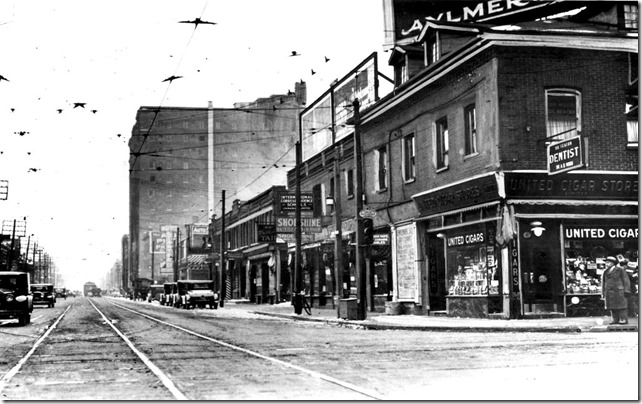
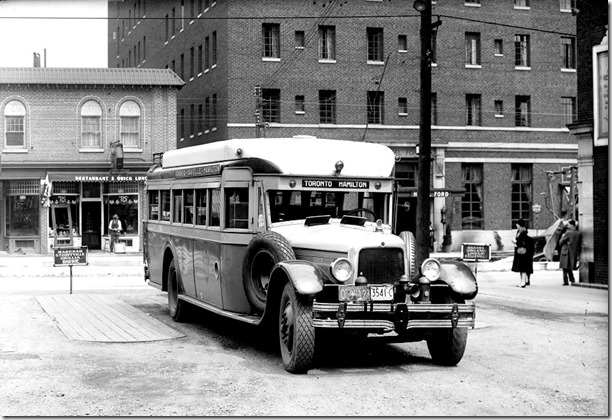
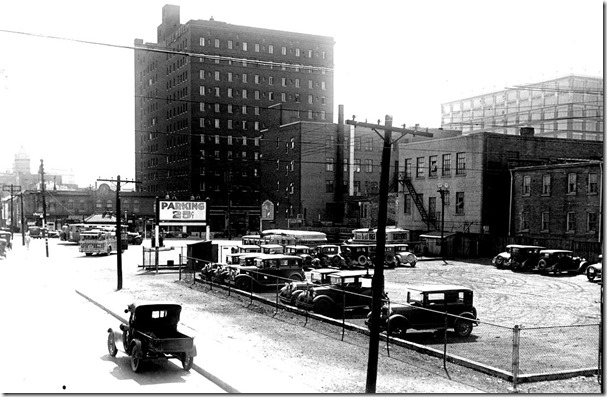
![Getty 515075319[1] Getty 515075319[1]](https://tayloronhistory.com/wp-content/uploads/2016/02/getty-5150753191_thumb1.jpg)
![May 11, 1969 see TRL site for details-- tspa_0000354f[1] May 11, 1969 see TRL site for details-- tspa_0000354f[1]](https://tayloronhistory.com/wp-content/uploads/2016/02/may-11-1969-see-trl-site-for-details-tspa_0000354f1_thumb.jpg)
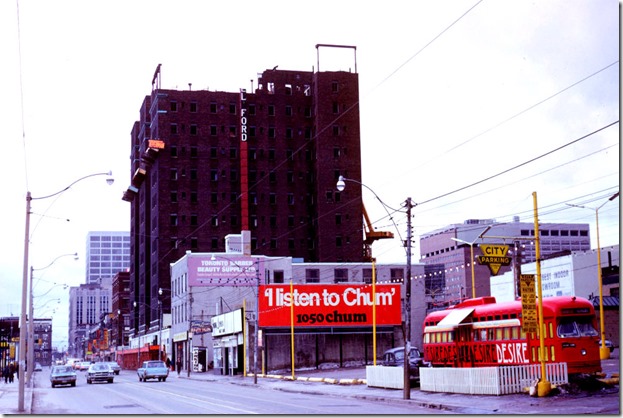
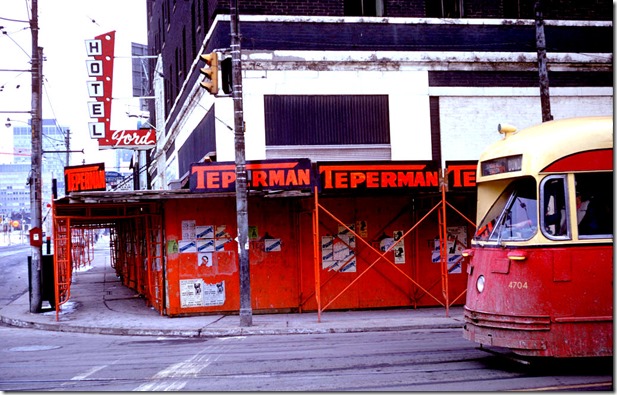
![cid_E474E4F9-11FC-42C9-AAAD-1B66D852[2] cid_E474E4F9-11FC-42C9-AAAD-1B66D852[2]](https://tayloronhistory.com/wp-content/uploads/2016/02/cid_e474e4f9-11fc-42c9-aaad-1b66d8522_thumb1.jpg)


Great shots of the long-gone Ford Hotel. My mother and father spend their honeymoon there in 1953. I always tried to envision what the hotel had looked like, while I was waiting for a PMCL coach at the Bay St. bus terminal to take me home to Midland, and would stare at the spot where the hotel once stood. Now I know. Thank you for the post. I also remember reading that in April 1940, the Ford Hotel was where the New York Rangers hockey club celebrated its winning of the Stanley Cup, shortly after defeating the Toronto Maple Leafs at not-too-far-away Maple Leaf Gardens.
My father worked at the hotel when it was still a great hotel. This was in the early 50’s. I know I visited my dad there while he was working and it seemed like I was treated like royalty. At the time my dad worked as a comptroller. Around 1955 he was transferred to the Prince Edward Hotel in Windsor and stayed there until he retired. My dad was always trying to keep busy so after he left the Prince Edward he went to work for a car company then a plumbing company. At one time in Windsor he became the book keeper for our local church which he did for many years.
I remember staying at this hotel in 1967 at the age of 11. We had emigrated from England, landing at Halifax, and took the overnight train to Toronto. We were met by friends (also emigrants) at Union Station and they arranged we would stay at the Ford Hotel before leaving for Collingwood the next day. The view from our window was of the new city hall (no intervening tall buildings back then). I still have an empty book of matches from the hotel, with the advertisement “Entertainment nightly in our Tropical Room”.
I was one of the travelers straight out of the bus terminal who needed an affordable place to stay overnight, hassle free, no questions asked or reservations required. Simply check in, MYOB, lock the door. Check out in the morning and carry on. I was a bit apprehensive at first but everything turned out well. Thank goodness for the Ford Hotel. RIP Brian Gregory, a grateful patron.
Doug,Ken, Gregg, Thomas, great comments and history. I worked there as room clerk in 1965-66 and it was an interesting and welcome place for new arrivals from Europe, bus/train travellers and anyone needing cheap, safe (yes) accommodation. See my memoir on my days there for more. We had fun and mostly pleasure (though poor pay) in those days. The Ford was still running 80% occupancy in those days and if you were unsatisfied with your room we would call a cab to take you to the other Sheraton owned hotel the King Edward down the street. Doug’s article has some mistakes but essentially OKAY. You had to be THERE! Norm Opperman.